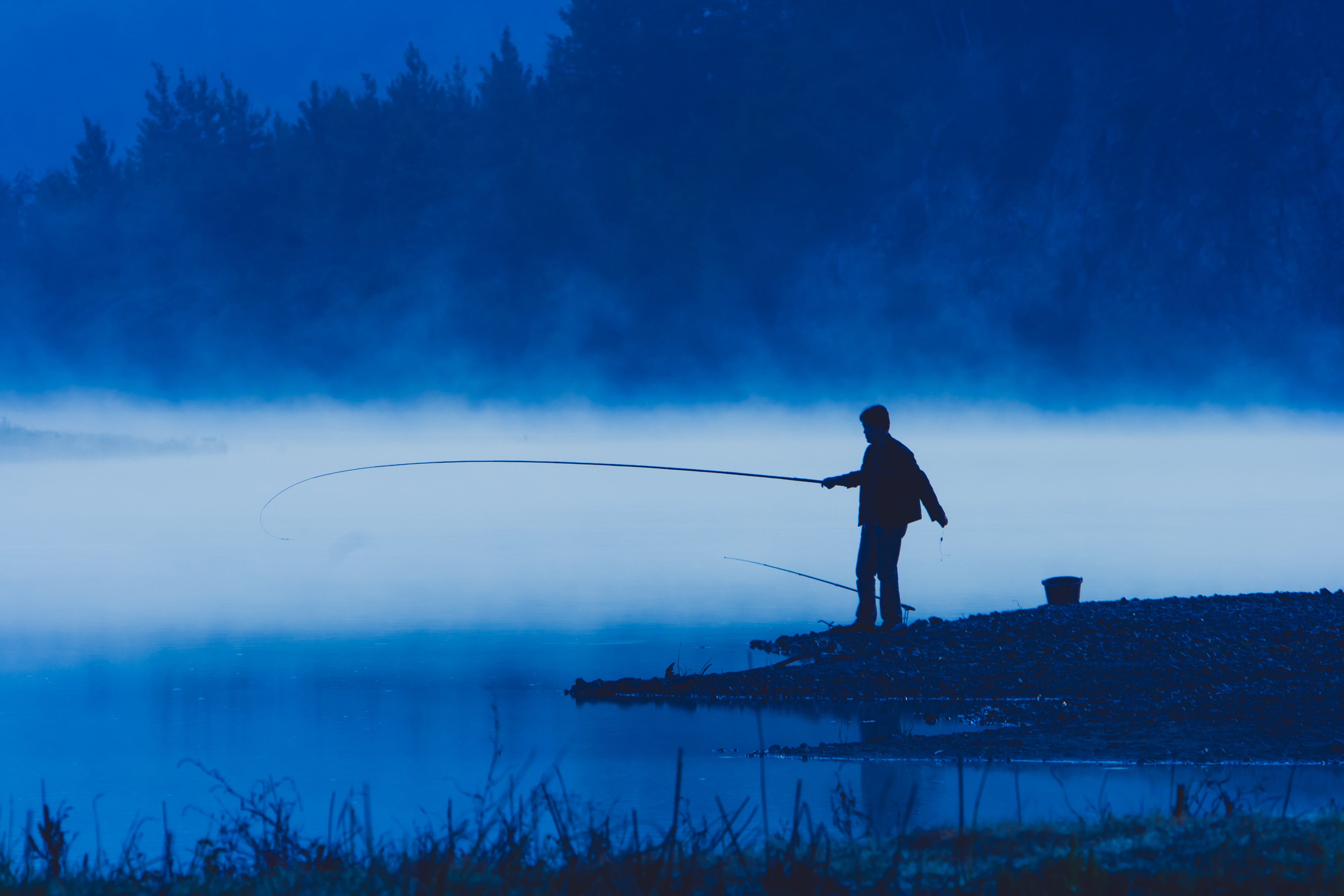
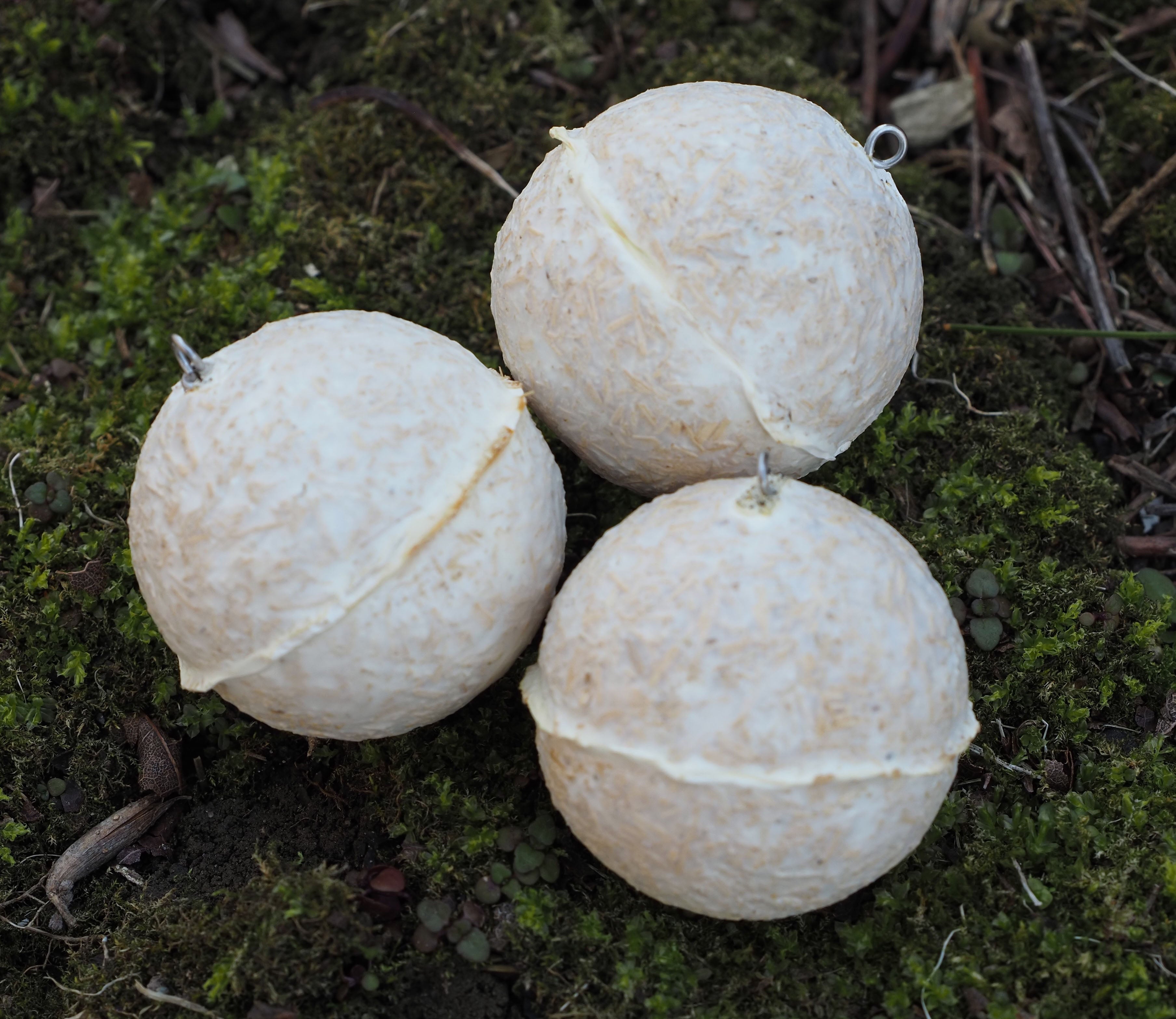
MycoBobbers are 100% biodegradable fishing bobbers helping to save America's waters. One small step toward a sustainable future
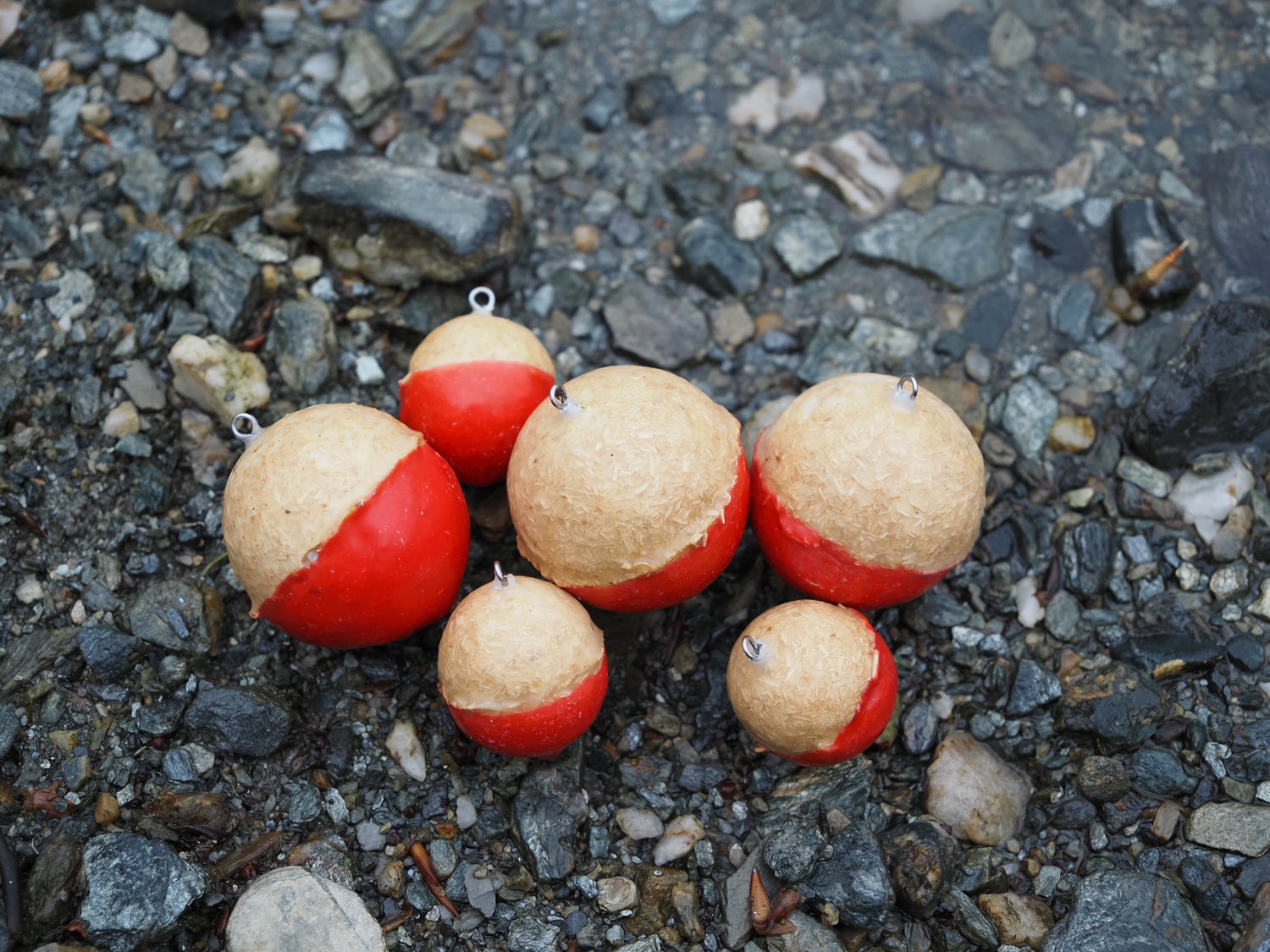
MycoBobbers
Responsible anglers can now help conserve fisheries by switching to all natural MycoBobbers®!
These unique handcrafted fishing bobbers are part of the MycoBuoy family, and are grown in one week from mushroom mycelium and plant waste fibers and are coated with beeswax to render them waterproof.
If lost to tree limbs or wires, these bobbers will naturally degrade into elements within weeks.
Simply attach the MycoBobber to a snap swivel and fish away! You’ll find that these bobbers float higher than plastic or cork types, and cast farther than traditional bobbers.
Holiday Sale!

MycoBobber Starter Pack
3 - 1.5 inch MycoBobbers coated in water and mold resistant beeswax for continued reuse in water. A plastic alternative made from fungal mycelium and plant material.
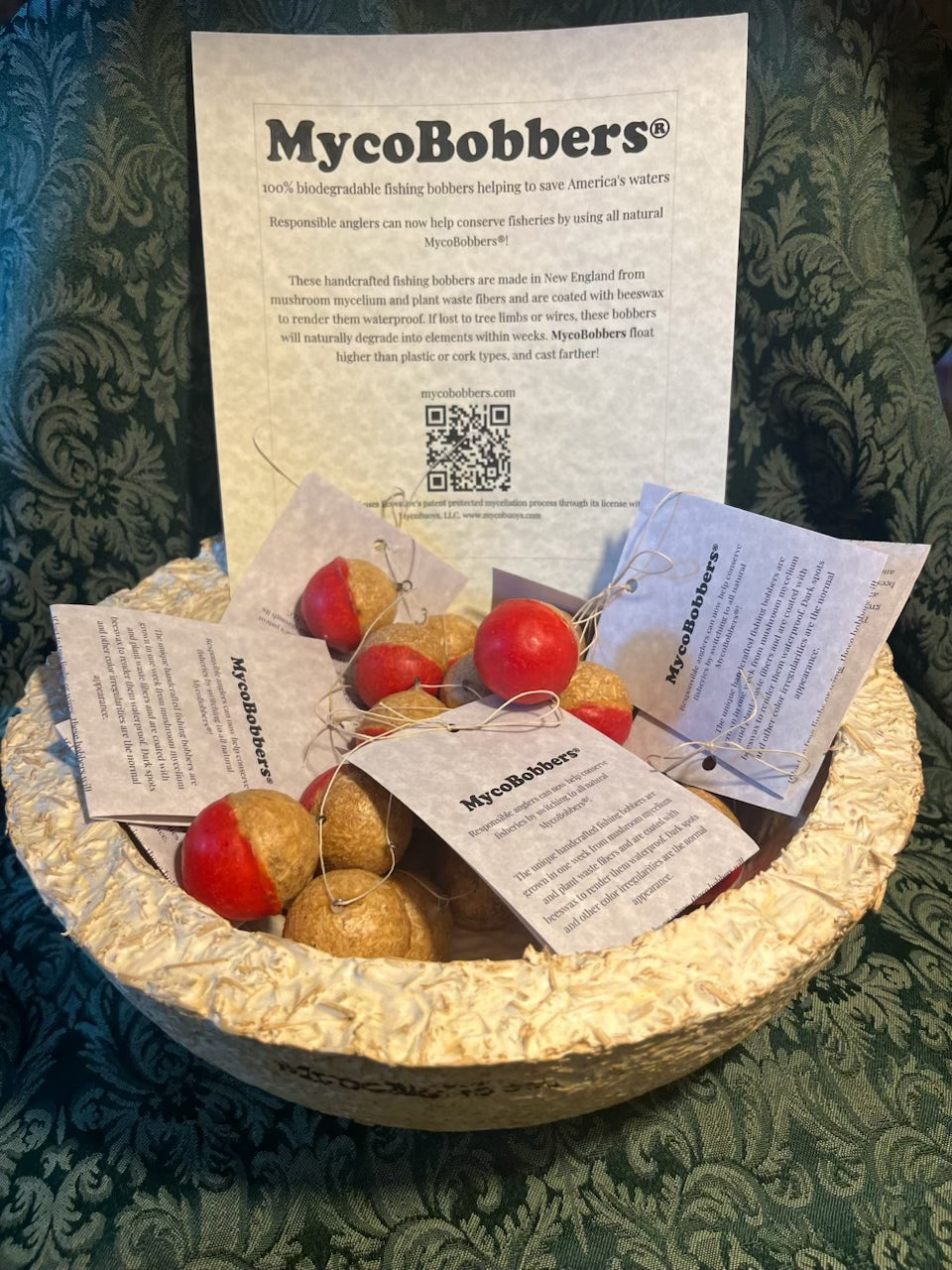
MycoBowl Retail Display
8 sets of 3 MycoBobber packs set in a mycelium bowl with info card for retail display. Retail sales only.
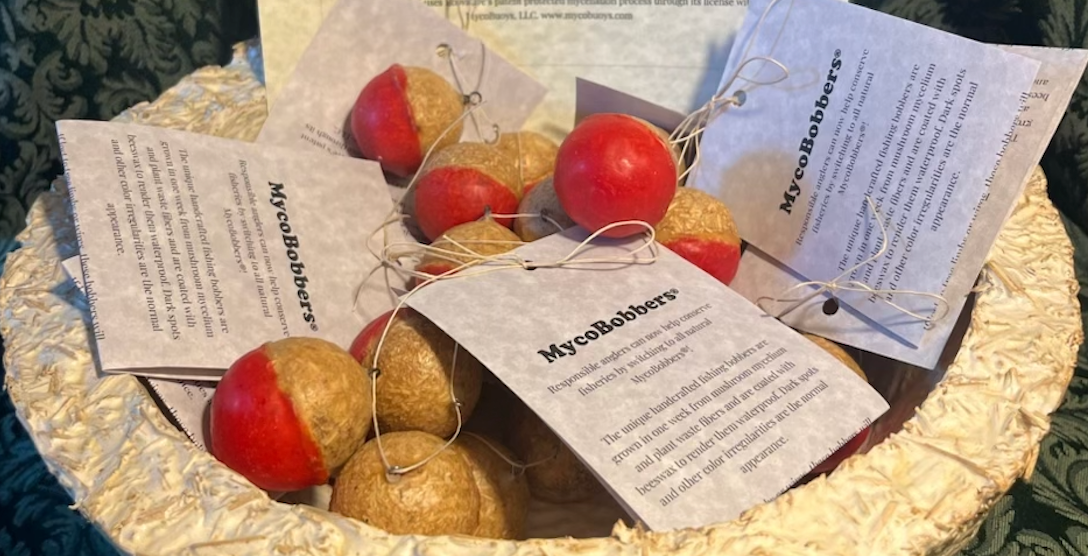
MycoBowl Retail Refill
8 sets of 3 MycoBobber packs to refill the MycoBobber Bowl retail display. Retail sales only.
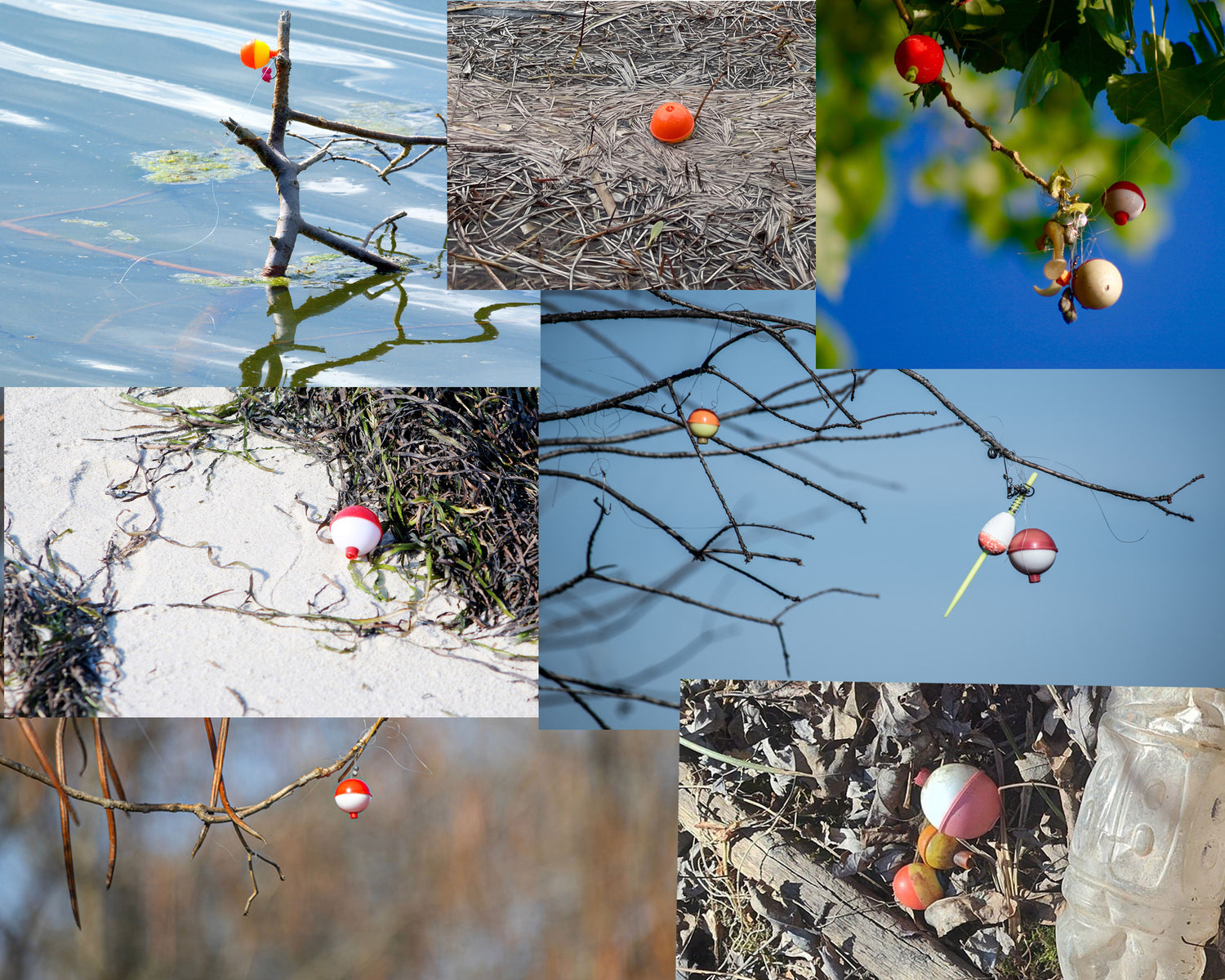
Plastics Pollution
MycoBobbers help protect our water resources from plastics pollution!
Microplastics pollution is not just a concern for marine ecosystems, but also negatively affects inland lakes and rivers. Plastic bobbers and lures, when lost or discarded in freshwater environments, contribute to long-lasting pollution. MycoBobbers perform the same tasks for the suspension of bait and lures in water, but do so using 100% natural and biodegradable materials.


Cork vs. Mycomaterials
Cork
Cork oak trees are only harvested in Mediterranean countries. A cork oak grows for 25 years before the bark can be harvested for the first time, and is subsequently harvested every 9-14 years. Processing entails seasoning the cork bark for at least 6 months, followed by boiling it and cutting it into strips. It takes 3-10 years to decompose. Cork floats are unlikely to be composted at home due to the time it requires.
Why Mycelium and Hemp?
Hemp fiber is adaptable to various climates and can be grown worldwide. Hemp is planted and grown as an annual crop. Hemp is dried and the inner fibers that are combined with cloned fungal mycelium to make substrate for MycoBobbers in 4 days. MycoBobbers are waterproofed with a thin coating of melted beeswax. MycoBobber carbohydrate polymers break down within weeks to a few months - cellulose from hemp; chitin and beta-glucans from the fungus; and fatty esters in beeswax. The end of life for a MycoBobber happens when the floats crack open and expose the material to water and air allowing decomposition by other fungi and bacteria to return the material to elemental carbon, hydrogen, oxygen, sulphur, nitrogen, calcium, potassium, sodium and other macro and micronutrients. When home composted, nutrients are purposefully returned to soils to be used again to grow more hemp. The process is truly circular with all inputs returning identical nutrients to the soil to grow more hemp plants.
